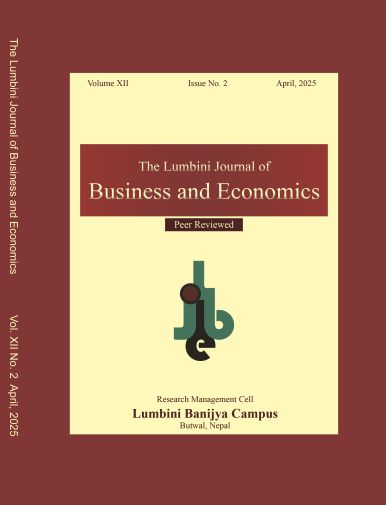Corporate Social Responsibility and Employee Engagement in Commercial Banks
DOI:
https://doi.org/10.3126/ljbe.v12i2.77437Keywords:
Corporate social responsibility, employees, banks, job performanceAbstract
Purpose: This study evaluates how corporate social responsibility (CSR) practices impact employee engagement in Nepalese commercial banks.
Methods: The study used a descriptive and casual comparative research design. Data were gathered using a structured questionnaire with a seven-point rating scale to ensure reliable responses. It focused on a group of 300 bank employees, selected using a convenience random sampling method.
Results: The results of the study depict that training and development positively impact employee engagement, followed by workforce diversity and human rights. Work-life balance also increases engagement, but health and safety did not significantly influence engagement. It finds that CSR activities help improve employee involvement and motivation. This highlights the importance of including CSR in a bank’s plans to build a more engaged workforce.
Conclusion: The study concludes that internal CSR policies, primarily those that emphasize training and building enabling work environments, are critical to enhancing employee engagement in Nepalese banks. Organizations that focus on these areas are more likely to have greater employee engagement, productivity, and long-term sustainability. Future studies should look into specific internal CSR activities, their effects, and ways to retain young employees to improve engagement and productivity.




